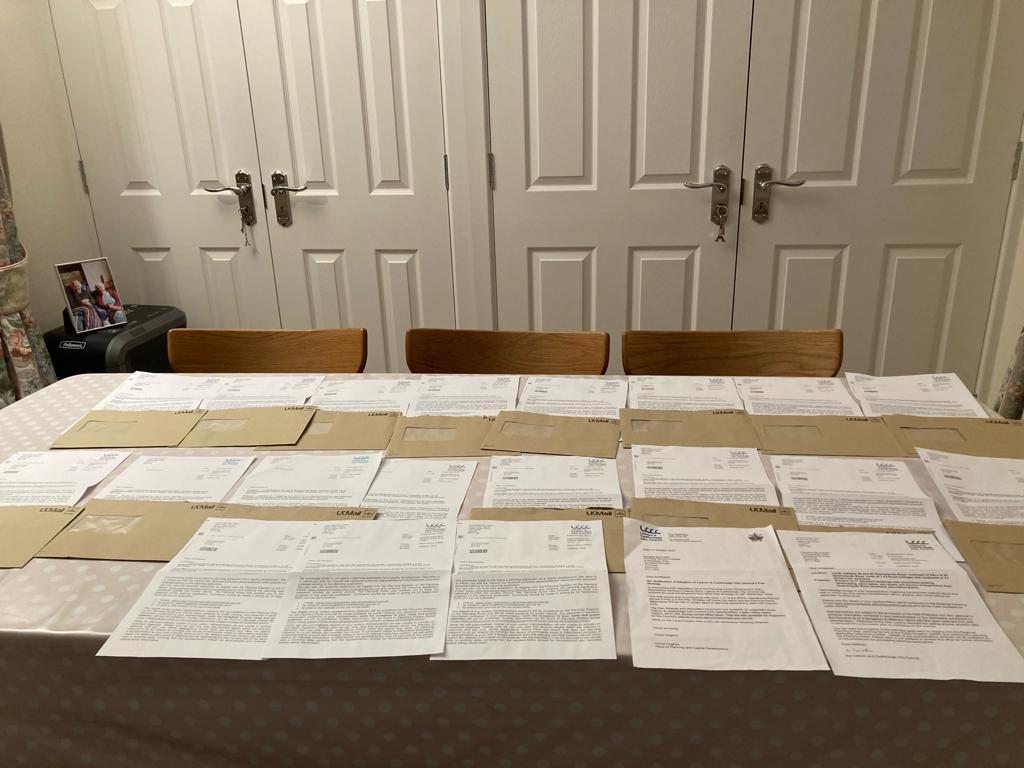LCCC’s Flood of Notification Letters Raises Eyebrows
Introduction:
In recent weeks, the Lagan Valley Regional Park has become a battleground for communication as the planning application LA05/2022/0033/F unfolds. The LCCC Planning Department, responsible for keeping residents informed, seems to have created quite a storm of its own, inundating Quarterlands Group and others with a deluge of notification letters.
The Flood of Letters:
The Quarterlands Group, a community organization deeply invested in the future of the Lagan Valley Regional Park, has recently found itself at the receiving end of an unusual and somewhat bewildering chaos inn communication. Hundreds of notification letters related to planning application LA05/2022/0033/F have been flooding their home mailboxes and email inboxes.

Multiplicity and Waste:
What’s particularly striking is the sheer number of physical letters dispatched, often in multiples within a single mailshot. One photo, shared by a member of the Quarterlands Group, showcases over 20 duplicate copies received by them over a few days, with only two bearing signatures. This raises a question: How much money is the LCCC willing to waste on what seems to be poor database management and communication practices?
The Unsettling Pattern:
The use of unsigned copies, alongside the excessive number of letters, points to breakdowns in the communication process. Residents, diligently attempting to engage with the planning process, are instead left in a state of confusion and frustration. The lack of a streamlined communication strategy not only wastes valuable resources but also hampers the community’s ability to meaningfully participate in the decision-making process.
The Cost of Inefficiency:
In an era where efficient communication and transparent processes are more critical than ever, the LCCC’s handling of this situation raises concerns about the effectiveness of local governance. The unnecessary waste of paper, postage, and administrative effort, coupled with the potential for miscommunication, underscores the need for a thorough review of communication practices within the Planning Department.
Conclusion:
As the Quarterlands Group and other concerned residents grapple with the implications of planning application LA05/2022/0033/F, the inefficient flood of notification letters from the LCCC Planning Department adds an unexpected twist to an already complex situation. It should be a call to action for our local authorities to revisit and revamp their communication strategies, ensuring that residents are well-informed and engaged without unnecessary waste and confusion.
